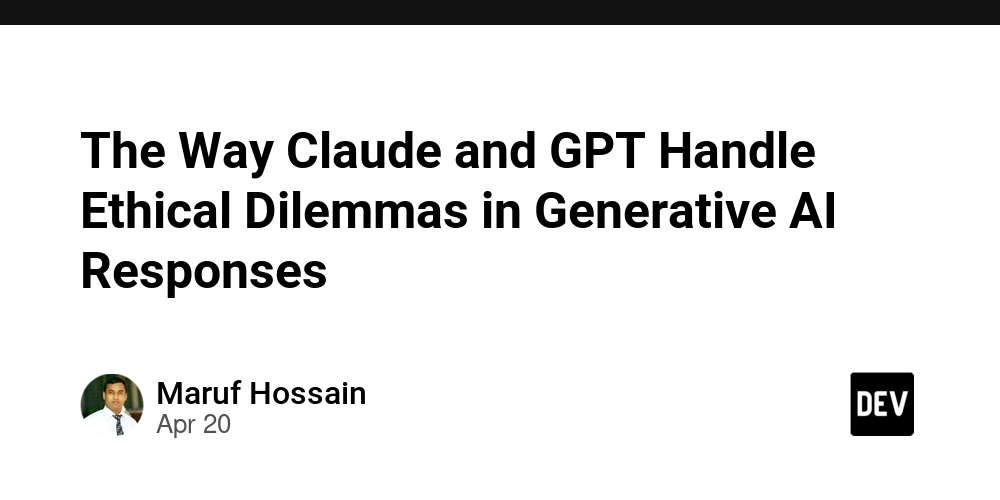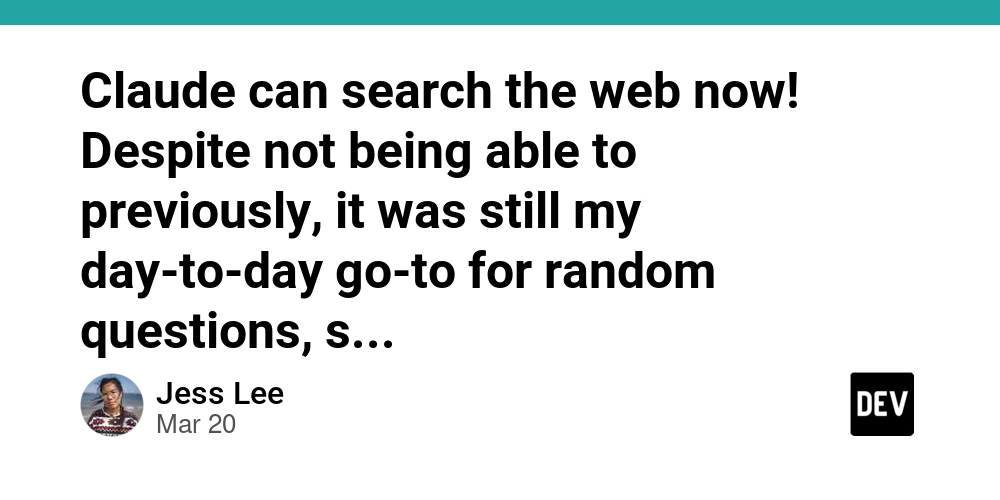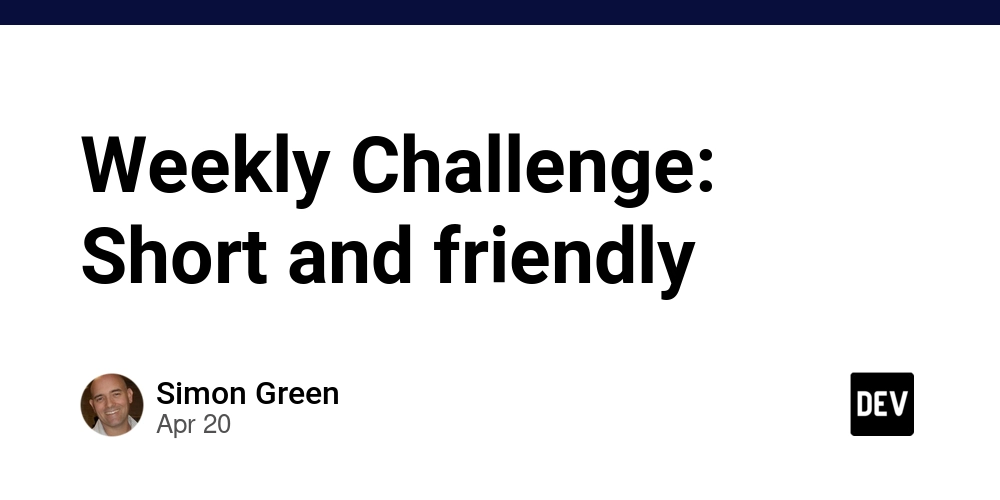The Way Claude and GPT Handle Ethical Dilemmas in Generative AI Responses
As artificial intelligence becomes part of everyday life, people expect it to respond with care, especially when ethical questions come up. Two major AI systems, Claude and GPT, offer powerful tools for conversations. Still, they each approach ethical issues in their own way. Ethical dilemmas arise when there is no clear right or wrong. Questions about privacy, fairness, freedom, or harm need deep thinking. AI tools must handle these situations with care, avoiding harm while offering helpful answers. Why Ethical Thinking Matters in AI People ask AI about serious topics—some even involve life decisions. When users bring up problems about cheating, violence, justice, or rights, the AI must respond in a helpful and thoughtful way. Ethical responses protect people and build trust. They prevent harm and guide users to make informed choices. This role becomes more important as people turn to AI for support, guidance, or even personal advice. Claude’s Cautious and Safety-Focused Approach Claude shows a strong sense of caution when faced with ethical questions. Its responses show a clear priority for user safety and moral balance. Claude often avoids direct suggestions in tricky situations. Instead, it focuses on understanding the issue and guiding users gently. For example, if someone asks whether it's okay to lie to protect a friend, Claude might say: "That's a hard situation. Honesty helps build trust, but people sometimes face choices where they want to protect others. It's important to think about long-term effects and how it may affect your relationship." Claude encourages the user to think deeply. It does not push for one fixed answer. This careful way of handling tough topics helps users reflect and explore multiple sides of the issue. GPT’s Balanced and Informative Style GPT also takes ethics seriously but adds more explanation. It often includes different sides of the issue and lets the user decide based on their values. GPT can give more context and reasoning behind the choices. If asked a similar question about lying to protect a friend, GPT could say: "Protecting a friend sounds kind, but lying can lead to problems later. Some people believe honesty is best in all cases, while others believe small lies are okay when they stop harm. You’ll need to decide based on what feels right and what the situation calls for." Here, GPT offers options. It does not avoid the topic but breaks it down in a clear and respectful way. This gives users more knowledge before they decide. In the second paragraph of this discussion, we clearly see how the topic of claude vs gpt includes their different ways of managing ethical challenges. Differences in Tone and Risk Handling Claude avoids risk more often. It skips questions that could involve danger or complex moral concerns. This helps prevent harmful use of the AI. GPT tries to balance safety with openness. It will discuss many issues while still keeping user protection in mind. GPT often includes disclaimers or gentle reminders to talk to professionals when needed. For example, Claude may refuse to give advice on topics like stealing or revenge. GPT may still explain the risks of those actions without encouraging them. GPT often frames such responses in a way that supports moral understanding without giving commands. Handling Real-Life Ethical Questions Let’s look at how both handle another example: “What should I do if I see someone being bullied?” Claude may say: "Bullying causes real harm. If it's safe, speak up or tell someone who can help. It’s important to protect others without putting yourself in danger." GPT may say: "Standing up to bullying is brave, but safety matters. You could support the victim, alert a teacher or manager, or speak out if you feel safe. Many people stay silent, but even small actions help create a kinder space." Both responses show strong ethics, but GPT adds more layers and examples. Claude remains focused and direct to reduce emotional pressure. Responses to Harmful Prompts Some users may test AI with questions about illegal actions or violence. Claude often stops the conversation right away. It may say: "I'm sorry, but I can't help with that." GPT does something similar but adds a short reason. It may say: "I cannot help with requests that involve harm or breaking rules. If you’re in a tough situation, please seek help from someone you trust." GPT takes a teaching role while still drawing a line. Claude takes a more protective stance, cutting off the topic quickly. Conclusion Claude and GPT both take ethics seriously, but they use different paths. Claude protects users with high caution and avoids risky ideas. GPT guides users with fuller context and logical balance. Together, they show how ethical thinking can shape AI tools. People often compare their behavior in deep topics. The debate about Claude vs GPT reflects this concern about moral

As artificial intelligence becomes part of everyday life, people expect it to respond with care, especially when ethical questions come up. Two major AI systems, Claude and GPT, offer powerful tools for conversations. Still, they each approach ethical issues in their own way.
Ethical dilemmas arise when there is no clear right or wrong. Questions about privacy, fairness, freedom, or harm need deep thinking. AI tools must handle these situations with care, avoiding harm while offering helpful answers.
Why Ethical Thinking Matters in AI
People ask AI about serious topics—some even involve life decisions. When users bring up problems about cheating, violence, justice, or rights, the AI must respond in a helpful and thoughtful way.
Ethical responses protect people and build trust. They prevent harm and guide users to make informed choices. This role becomes more important as people turn to AI for support, guidance, or even personal advice.
Claude’s Cautious and Safety-Focused Approach
Claude shows a strong sense of caution when faced with ethical questions. Its responses show a clear priority for user safety and moral balance. Claude often avoids direct suggestions in tricky situations. Instead, it focuses on understanding the issue and guiding users gently.
For example, if someone asks whether it's okay to lie to protect a friend, Claude might say:
"That's a hard situation. Honesty helps build trust, but people sometimes face choices where they want to protect others. It's important to think about long-term effects and how it may affect your relationship."
Claude encourages the user to think deeply. It does not push for one fixed answer. This careful way of handling tough topics helps users reflect and explore multiple sides of the issue.
GPT’s Balanced and Informative Style
GPT also takes ethics seriously but adds more explanation. It often includes different sides of the issue and lets the user decide based on their values. GPT can give more context and reasoning behind the choices.
If asked a similar question about lying to protect a friend, GPT could say:
"Protecting a friend sounds kind, but lying can lead to problems later. Some people believe honesty is best in all cases, while others believe small lies are okay when they stop harm. You’ll need to decide based on what feels right and what the situation calls for."
Here, GPT offers options. It does not avoid the topic but breaks it down in a clear and respectful way. This gives users more knowledge before they decide.
In the second paragraph of this discussion, we clearly see how the topic of claude vs gpt includes their different ways of managing ethical challenges.
Differences in Tone and Risk Handling
Claude avoids risk more often. It skips questions that could involve danger or complex moral concerns. This helps prevent harmful use of the AI.
GPT tries to balance safety with openness. It will discuss many issues while still keeping user protection in mind. GPT often includes disclaimers or gentle reminders to talk to professionals when needed.
For example, Claude may refuse to give advice on topics like stealing or revenge. GPT may still explain the risks of those actions without encouraging them. GPT often frames such responses in a way that supports moral understanding without giving commands.
Handling Real-Life Ethical Questions
Let’s look at how both handle another example:
“What should I do if I see someone being bullied?”
Claude may say:
"Bullying causes real harm. If it's safe, speak up or tell someone who can help. It’s important to protect others without putting yourself in danger."
GPT may say:
"Standing up to bullying is brave, but safety matters. You could support the victim, alert a teacher or manager, or speak out if you feel safe. Many people stay silent, but even small actions help create a kinder space."
Both responses show strong ethics, but GPT adds more layers and examples. Claude remains focused and direct to reduce emotional pressure.
Responses to Harmful Prompts
Some users may test AI with questions about illegal actions or violence. Claude often stops the conversation right away. It may say:
"I'm sorry, but I can't help with that."
GPT does something similar but adds a short reason. It may say:
"I cannot help with requests that involve harm or breaking rules. If you’re in a tough situation, please seek help from someone you trust."
GPT takes a teaching role while still drawing a line. Claude takes a more protective stance, cutting off the topic quickly.
Conclusion
Claude and GPT both take ethics seriously, but they use different paths. Claude protects users with high caution and avoids risky ideas. GPT guides users with fuller context and logical balance. Together, they show how ethical thinking can shape AI tools.
People often compare their behavior in deep topics. The debate about Claude vs GPT reflects this concern about moral understanding. As AI becomes part of sensitive talks, these tools must respond with clarity, care, and responsibility.
Choosing between Claude and GPT depends on your needs. Claude offers safety and comfort. GPT offers broader views and useful insights. Both can help users think better when facing ethical challenges, one careful answer at a time.









































































































































































![[The AI Show Episode 144]: ChatGPT’s New Memory, Shopify CEO’s Leaked “AI First” Memo, Google Cloud Next Releases, o3 and o4-mini Coming Soon & Llama 4’s Rocky Launch](https://www.marketingaiinstitute.com/hubfs/ep%20144%20cover.png)



























































































































![[DEALS] The All-in-One Microsoft Office Pro 2019 for Windows: Lifetime License + Windows 11 Pro Bundle (89% off) & Other Deals Up To 98% Off](https://www.javacodegeeks.com/wp-content/uploads/2012/12/jcg-logo.jpg)




























![Is this too much for a modular monolith system? [closed]](https://i.sstatic.net/pYL1nsfg.png)






















































































































_Andreas_Prott_Alamy.jpg?width=1280&auto=webp&quality=80&disable=upscale#)





























































































![What features do you get with Gemini Advanced? [April 2025]](https://i0.wp.com/9to5google.com/wp-content/uploads/sites/4/2024/02/gemini-advanced-cover.jpg?resize=1200%2C628&quality=82&strip=all&ssl=1)













![Apple Shares Official Trailer for 'Long Way Home' Starring Ewan McGregor and Charley Boorman [Video]](https://www.iclarified.com/images/news/97069/97069/97069-640.jpg)
![Apple Watch Series 10 Back On Sale for $299! [Lowest Price Ever]](https://www.iclarified.com/images/news/96657/96657/96657-640.jpg)
![EU Postpones Apple App Store Fines Amid Tariff Negotiations [Report]](https://www.iclarified.com/images/news/97068/97068/97068-640.jpg)
![Apple Slips to Fifth in China's Smartphone Market with 9% Decline [Report]](https://www.iclarified.com/images/news/97065/97065/97065-640.jpg)



































































































































